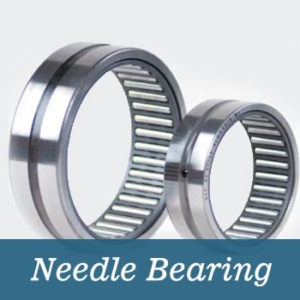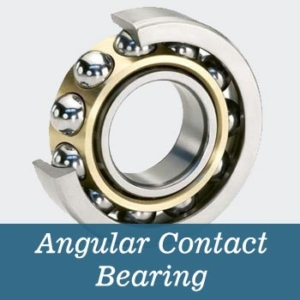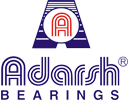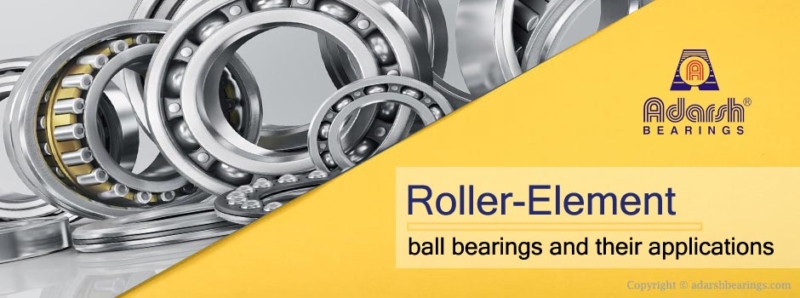The most popular and widely used types of bearing are roller-element bearings. Wheelchairs, bicycle wheels, the well-known fidget spinner, and other items all use the tiny ball bearings. All varieties of ball bearings are utilised for rolling purposes, and they are installed in the wheel axles of objects with wheels or rolling supports. There are several different types of ball bearings, including cylindrical, spherical, needle, ball, angular contact, and tapered bearings.
1) Needle Bearing

This type of roller bearing also employs long rollers with a cylindrical shape. They are frequently referred to as “needle bearings” because of the way they appear to be needles. The needles that are employed as the rolling elements are typically four times longer than the bearing’s diameter. Compared to other roller-element bearings, they are longer.
This property helps the bearing’s contact surface expand, which increases the bearing’s ability to carry more axial and radial stresses. They are also employed to significantly lower the rolling object’s friction. This type of bearing has the benefit of being extremely thin despite having a bigger surface area.
Application of Needle Bearing
- The drive shaft of rear-wheel drive vehicles has a minimum of seven to eight needle bearings.
- They are utilised in car parts like pumps, transmissions, rocker arm pivots, and compressors.
- They are utilised in two-stroke engines, planetary gear sets, power transmissions, gearboxes.
2) Cylindrical Bearing

The cylindrical bearing and needle bearing are quite similar, however the cylindrical bearing is shorter than a needle bearing because the rolling parts are significantly more bulky and short in length. It is a useful form of bearing for usage in high speed because the rolling elements, which are more cylindrical than needle-like, offer higher radial load support.
Similar to how a conventional ball bearing has single and multiple rows, a cylindrical bearing likewise has single and multiple rows, with the single-row cylinder bearing being simpler to construct and disassemble while the double or multiple-row bearing offering a greater capacity to carry radial loads.
Application of Cylindrical Bearing
- They are used in a wide variety of fields such as machine tools, oil pumps, wind turbines, steel mills, gearboxes, material handling, electric motors and wind turbines.
- Used in agricultural equipment components such as hydraulic cylinders, chaff discharge, auger heads, boom pivots, doors and chutes, pedals, kingpins, hinges and grain head and corn head reel systems.
3) Spherical Bearing
James Nasmyth invented self-aligning spherical bearings in the 1840s to support line shaft bearings in mills. This bearing allows for angular rotation about a central point in two orthogonal directions. The rotation object or shaft is seated in the inner ring of the bearing, which can be rotated as well as moved at an angle.
The inner surface of the outer ring and the outer surface of the inner ring are spherical and connected, allowing rotational and angular movement to a specific angle depending on the bearing specification.
Application of Spherical Bearing
- They are used in automobiles as drive axle bearings, vehicle control arm suspension, and so on.
- Other uses include heavy machinery, sewing machines, robotics, and so on.
4) Tapered Bearing
Furthermore, the tapered bearing has a conical shape with cylindrical rollers acting as rolling elements between the tapered inner and outer rings.
Application of Tapered Bearing
- This bearing is commonly found in hoisting equipment, gearboxes, rolling mills, and mining machines.
- Tapered bearings are commonly used in agriculture, mining, construction, engines, and propellers.
5) Angular Contact Bearings
This type of ball bearing has an outer and inner ringway that are offset from each other and run parallel to the bearing axis. This ball bearing has the capability and is designed to accommodate combined loads.
A combined load is one that has both axial and radial loads acting on it at the same time.
The contact angle is the line that connects the two points of contact in a ringway along the radial plane.
Applications of Angular Contact Ball Bearings
- Angular contact ball bearings are ideal for use in pumps, gearboxes, clutches, and electric motors, among other applications.
- Ball bearings are widely used in machine tools and material handling applications.
- Used extensively in wind energy and steel mills.
- Due to the use of heavy machinery, angular contact ball bearings are used in the agricultural field because of their high performance while supporting combined loads of both axial and radial loads.
- Because of their high levels of dependability, sustainability, and longevity, this type of ball bearing is utilised in autos.
Conclusion
These bearings are frequently used by the majority of heavy machinery manufacturers and other production sectors. Bearings are not widely used in other industries, except from these businesses or organisations. It is crucial to choose the best bearing for the job, and there are a number of factors to take into account.

